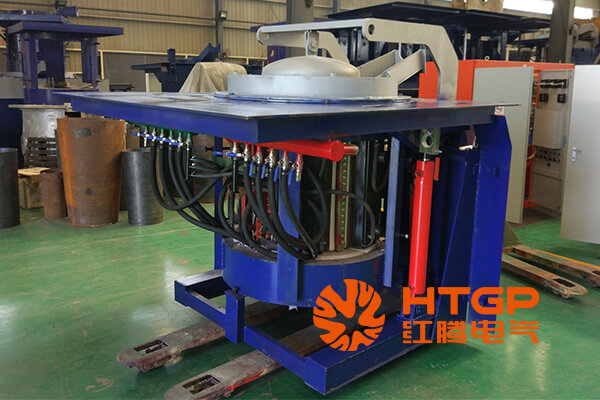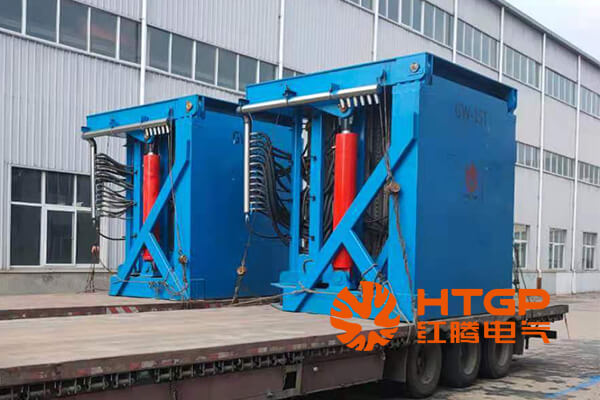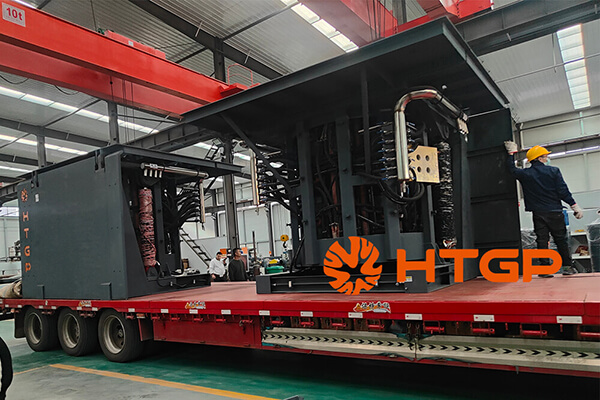How to Use Steel Induction Furnace to Melt Scrap Steel?
A steel induction furnace is a piece of equipment used to heat and smelt metals. It uses the principle of electromagnetic induction to generate an alternating magnetic field through an inductor to generate eddy currents inside the metal, thus heating the metal.

Composition
Steel induction furnaces usually consist of the following parts:
Induction Coil: The induction coil is the core component of the steel induction furnace. It generates an alternating magnetic field by passing in alternating current, which generates eddy currents inside the metal to achieve heating.
Power Supply: The power supply provides alternating current to the induction coil to produce an alternating magnetic field.
Control System: The control system is the command center of the steel induction furnace. It controls the frequency and power of the power supply, as well as parameters such as heating time and temperature according to production needs and process requirements.
Cooling System: Since a large amount of heat is generated during the heating process, a cooling system is required to cool the equipment to avoid overheating and failure. The most commonly used is a closed cooling tower.
Furnace Lining: The furnace lining is the supporting component of the steel induction furnace. It is made of refractory materials and can withstand high temperatures and chemical corrosion.
Features
Fast Heating Speed: Since induction heating directly heats the inside of the steel material through electromagnetic induction, the heating speed is very fast, which can greatly improve production efficiency.
Uniform Heating: Induction heating is heated by eddy currents generated by electromagnetic induction, so the steel material is heated evenly without local overheating or undercooling.
Energy Saving and Environmental Protection: Induction heating is an efficient and energy-saving heating method. Compared with traditional flame heating, it can greatly reduce energy consumption and emissions.
Easy Operation: The operation of the steel induction furnace is relatively simple. You only need to adjust the frequency and power of the power supply to control the heating temperature and speed.
Wide Scope of Application: Steel induction furnaces can be used for heating and smelting various steel materials, including carbon steel, alloy steel, stainless steel, etc.

Smelting Process
The smelting process of steel induction furnace includes seven steps: charge selection, charging, melting, slag making, deoxidation, slag removal, and pouring.
Charge Selection
The main raw materials for smelting are scrap steel and a part of pig iron. In addition to the chemical composition required, the scrap steel and recycled materials should also have appropriate sizes so that the furnace materials can be heated effectively. For this reason, some scraps can also be used to fill the gaps to increase the density of the charge in the crucible. When a molten pool is formed at the bottom of the crucible, the size of the charge has no effect on the heating effect.
Charging
Since there is no oxidation period during smelting, the elements are burned very little, and the ingredients can be accurately batched. Alloy materials that are not easily oxidized, such as nickel, ferromolybdenum, etc., can be added at the same time as scrap steel. In order to improve productivity, reduce the hydrogen content in steel, and prevent scrap steel containing moisture or grease from exploding when heated in the furnace, scrap steel can be preheated to below 550°C. Too high a preheating temperature will seriously oxidize the charge and reduce thermal efficiency. During discontinuous steelmaking, wet materials and grease-containing materials must be added in batches to facilitate drying. Only dry materials can be added after the molten pool is formed. Small furnaces are generally loaded manually, using boxes or chutes to load the materials into the furnace, while large furnaces can be loaded with conveyor belts or charging trucks.
Melting
It is necessary to pay close attention to the melting of the charge, continuously add materials, and loosen the charge promptly and continuously to make it drop smoothly into the molten pool, keep the melting in progress, and avoid bridging. The so-called “bridging” means that the charge in a semi-molten state is bonded above the molten pool so that the charge cannot contact the molten pool. This can cause the temperature of the molten pool to rise sharply, damaging the crucible. Once a bridge occurs, the crucible can be tilted to melt a gap in the erected charge to continue adding materials, raise the steel water level to the bridge, and dissolve the bonded charge.
Slagging
Slagging should be carried out before all the charge is melted to avoid serious oxidation of molten steel. Slag can be added to the bottom of the crucible in advance. The slag system used is mainly CaO-Al2O3-CaF2. The composition of the slag varies depending on the crucible material and deoxidizer. The slag should be dried in advance to avoid hydrogenation of molten steel.
Deoxidation
After the furnace charge is fully melted, the temperature is measured, and samples are taken. Skilled operators can adjust the input power and correctly predict the time for heating to the tapping temperature to coordinate the furnace operations. According to the analysis results of the steel sample in front of the furnace, alloy materials are added, and ferrosilicon powder and various composite deoxidants are used for deoxidation. Due to the strong stirring of the molten pool, the alloy material can be quickly melted and distributed evenly, and deoxidation products can also float and be adsorbed by the molten slag. After the ingredients are qualified and the temperature is suitable, the slag can be removed.
Scavenging
After the charge is melted, the slag covers the surface of the molten steel. When the temperature rises to about 1500°C, remove the slag, take samples, and use a Desktop Optical Emission Spectrometer to detect the chemical composition, and then re-cover with the composite moisturizing covering agent. According to the analysis results of the molten steel in front of the furnace, alloys are added to adjust the chemical composition. At the same time, use steelmaking pig iron or graphite carburizer to adjust the carbon element composition. If the slag is thin, you can tilt the crucible to pour it out or add lime and scoop it out after the slag thickens.
Pouring
When pouring, the molten steel is superheated to a certain temperature to ensure pouring needs. In order to increase output and reduce costs, steel must be poured into good castings quickly.

Precautions
When using a steel induction furnace, you need to pay attention to the following points:
· Before starting, check whether the equipment is normal and deal with it in time if there are any abnormalities.
· During operation, parameters such as heating time and temperature should be controlled according to process requirements.
· During the heating process, attention should be paid to observing the changes in the metal, and any abnormalities should be dealt with in time.
· After the operation is completed, the power should be turned off, and the equipment should be cleaned and maintained.
Summarize
Steel induction furnace is an efficient, energy-saving, and environmentally friendly heating equipment, which is widely used in metal processing and smelting fields. Pay attention to safety and operating specifications when using it to ensure production efficiency and product quality. It should be noted that steel induction furnaces are more expensive and need to be selected based on production needs and budget.

